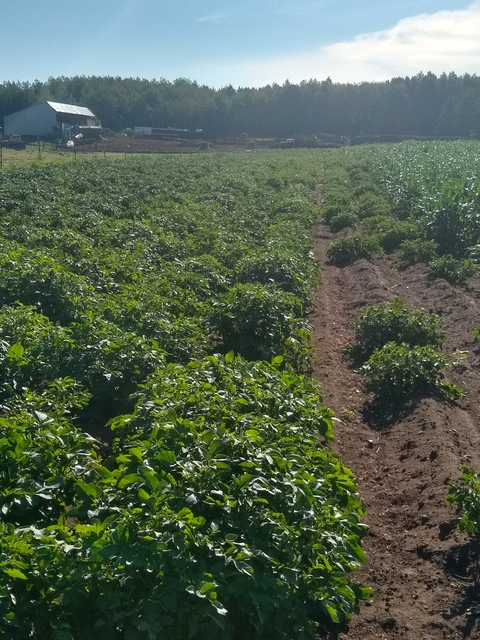If you are like me, you can hardly wait to see the daffodils and tulips each spring! Then there are the thoughts of playing in the soil, preparing it for growing your family needs. Often, I see folks have spotty stands or openings in their garden that were planted but didn't germinate due to several potential reasons. This causes less production of course, but also allows for weeds to get a foothold and creates more work in the long run. I often get questions about the aspects of the germination issues, what contributes to it, and what they should do about it. So here are some things I would encourage you to do to ensure a good stand establishment:
- Check your seed germination. This is especially true of seeds that you save or carry over from the previous planting season. This is a very simple process of counting out seeds, placing them in a damp paper towel, placing them in a warm window, and then checking on them over the course of two weeks. For more information see https://dane.extension.wisc.edu/2023/02/17/12915/
- Next, site preparation is critical. Soil to seed contact is one of the key factors to getting the seed to germinate. Some of the aspects include cleaning up large surface debris, lifting the soil, tilling, forking, and adding materials like compost to improve the soil friability.
- Add appropriate needed soil nutrients for vegetable production. Get your soil tested and add the appropriate amendments, as nutrients play a vital role in getting the new seedlings up and growing. step by step lawn/garden soil sampling guide
- Plant only once the soil temperatures are high enough. Some of our vegetable seeds are cool season crops like broccoli, carrots, or beets, and will germinate at much cooler temps (although it may take more time) vs others like tomato or squash which not only can be damaged by frost, but also will not take off if the soil is too cold. Understand that you don't have to plant your entire garden at once. Check out this table describing soil temp guide for seed germination.
- Planting depth is another factor. Take the time to be sure to determine the correct planting depth. Generally, there is a range due to soil type. This is where your skill as a gardener comes into play. Generally, it is better to place the seed a little deeper on coarse textured soils like sand or gravel as it dries out faster and is easier for the seedling to push out. As for loam or clay soils, they stay moist much easier and will often cause seeds to rot if germination doesn't start soon enough. This is why it is critical to not plant too deep on these soil types as the soil warms slower (due to moisture content) and is more difficult for the seedlings to push up through. Guide from the University of Vermont on Seeding depths and planting dates for growing zones 3 and 4.
- Moisture is key, not too much, but just enough. Here again, as the seed size gets smaller there is less room for error. Consistent moisture, especially on the dryer soil types, is key for quick consistent germination. Don't take the risk if you are planting large blocks of carrot, beets, or dill. Just set up irrigation to get them off to a good start and this will improve your success!
- Finally, weed control is essential. These small seedlings need extra care early. Getting rid of the plants that are very aggressive and compete for moisture, nutrients, and sunlight are all items that will help you ensure success for your garden.
Understanding all of these factors will help you ensure a good stand and improve your garden's productivity. For more basic gardening information, see our Facebook page at @UMNExtensionSLC


